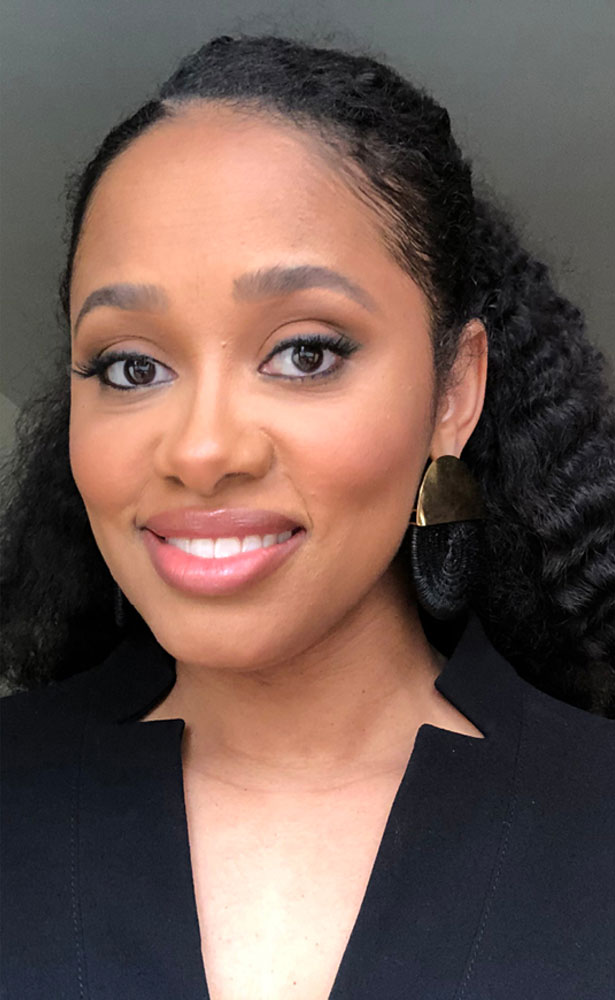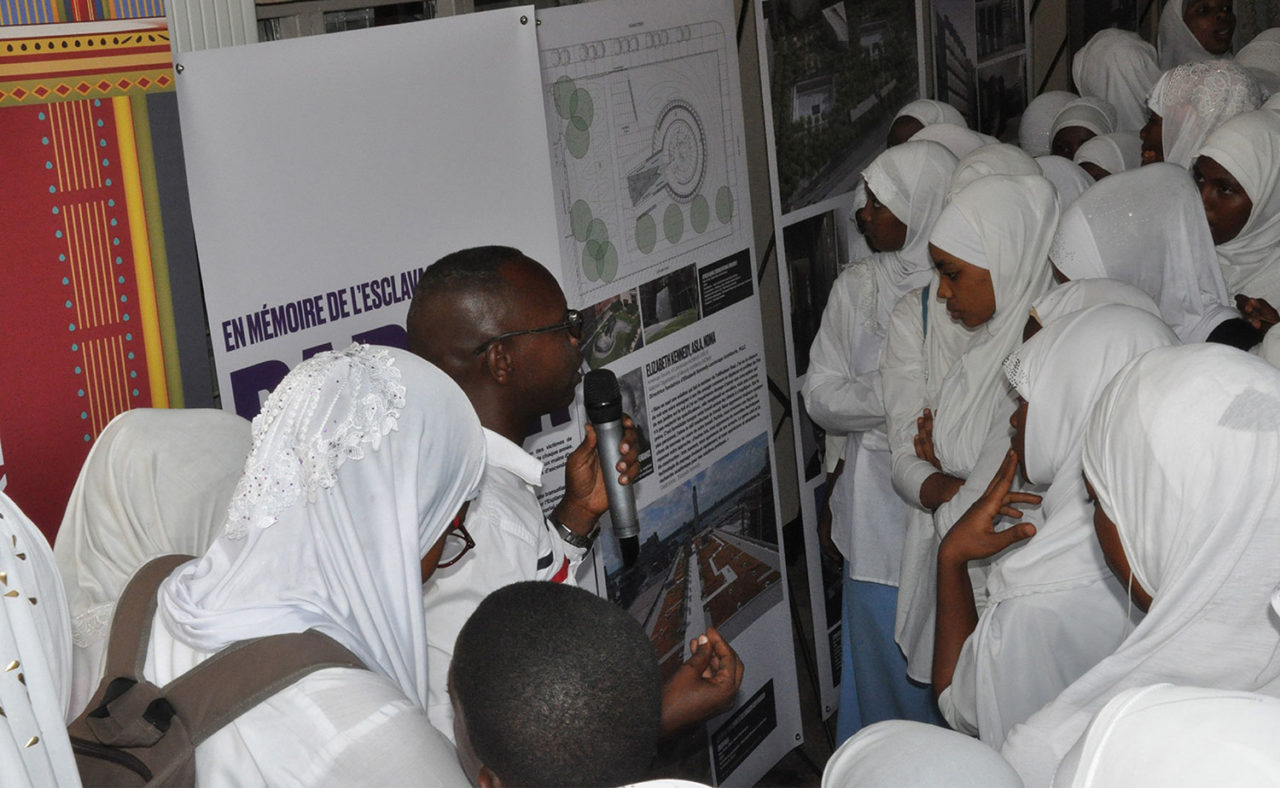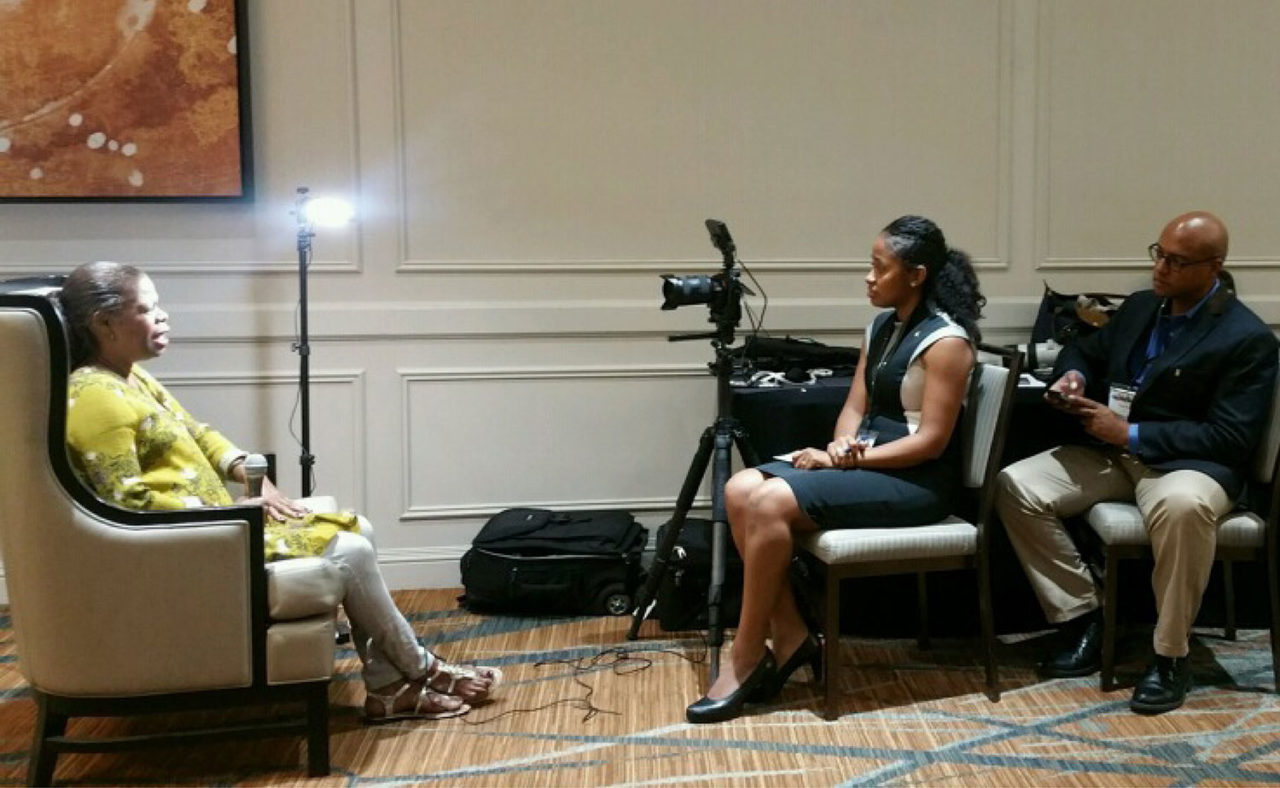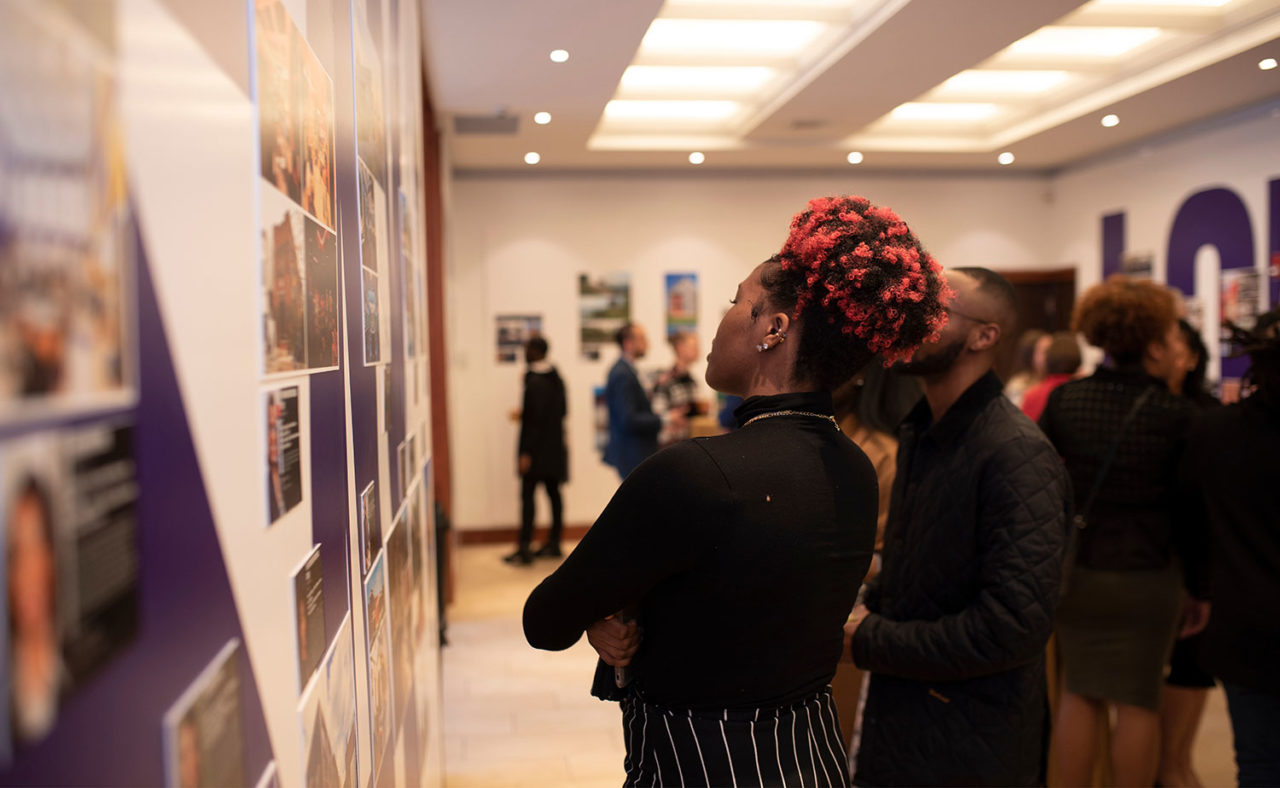by: AIA New York
Pascale Sablan, FAIA, NOMA, LEED AP, Associate at Adjaye Associates, has been recognized for her contributions to the industry and tireless advocacy efforts with the 2021 AIA Whitney M. Young. Jr Award, which elevated her to the AIA College of Fellows. She is the youngest Black American to receive that honor.
Sablan has over 14 years of experience contributing to a variety of mixed-use, commercial, cultural, and residential projects in the US, Saudi Arabia, India, Azerbaijan, Japan, and the United Arab Emirates. She is the 315th living Black woman to attain attain licensure in the US. Beyond serving on the Board of Directors of AIA New York, Sablan also serves as Northeast Regional Vice President and Historian of the National Organization of Minority Architects (NOMA), where she is also elected to become the fifth woman to serve as the organization’s President for 2023 and 2024. Sablan served as president of nycobaNOMA from 2015 to 2016, and has lectured at the National Museum of African American Heritage & Culture and the United Nations Visitor Centre, among many other institutions.
Sablan is also the Founder and Executive Director of Beyond the Built Environment, an organization that advocates for an equitable built environment by highlighting diversity in the design disciplines. Beyond the Built Environment’s SAY IT LOUD initiative has led to the development of numerous in-person and virtual exhibitions spotlighting the achievements of diverse design professionals. The first edition of SAY IT LOUD, focusing on NYC-based architects, was exhibited at the Center for Architecture in the spring of 2017.
Sablan earned a B.Arch. from Pratt University and an M.S. in advanced architectural design from the Columbia University Graduate School of Architecture, Planning and Preservation. Before joining Adjaye Associates, she worked at S9 Architecture, FXCollaborative, and Aarris Architects. Here, she tells us about balancing her roles as both a practicing architect and an advocate, and which project she feels defined her as an architect.
Q: What is influencing your work the most right now?
A: Our current fight for civil rights and design justice is strongly influencing my work. I am so hyped about joining the Adjaye Associates team. In my new role, I’ll be both an architect and an advocate. As an Associate in the New York office, I will be running projects while working with the senior team on project management, business development, and supporting diversity and advocacy work. To have the ability to hold both parts of my identity while working on world-impacting projects that push for design justice is a dream come true! For those like me who were told we had to choose, we can do both!
Q: What has been particularly challenging in your recent work?
A: SAY IT WITH – MEDIA is a 2020 initiative creating partnerships with media publications. Media publications have neglected the stories and contributions—and in some cases have erased—the existence of great women and BIPOC designers. With this call for action, I engage media outlets, digital, print, and broadcast to sign a Memorandum of Understanding (MOU) committing to four principles. The most ambitious is committing to reporting the percentage of women and BIPOC designers they feature in the publication annually, continued tracking to increase the result by 5 percent annually until 15 percent is achieved, and publish the results for accountability. First commitments were made by Oculus magazine, Cite Magazine, and The Cleveland Observer.
It has been particularly challenging to transform all those “statements of solidarity” into action and commitments of accountability. This effort requires more than just me. We need all who recognize the value in representation to encourage publications to which they are subscribers and supporters to take this pledge.
Q: What are some of your favorite recent projects that you’ve worked on?
A: The African Burial Ground National Monument in New York City will always be the project that defined me as an architect. I joined the team when the project was in the competition’s top-five finalist phase and worked on the project for four years. I helped with numerous community presentations, created marketing materials, and presented the project to those who stopped at the design booth. Once Aarris Architects won the project, I helped build models and contributed to the drawing set from schematic design through design development. One of my most memorable tasks was to draft the various symbols that are now engraved along the walls of the monument.
My very first project was an example of architecture serving as an advocate. The African Burial Ground National Monument keeps history and shares the existence of not just the 419 remains found on our site but the estimated 20,000 African slave bodies buried under City Hall and the neighboring federal buildings.
Q: What do you see as an architect’s role—and responsibility—within our culture?
A: Our responsibility as architects is to serve communities regardless of their economic standing. In underserved communities, poorly appointed architecture perpetuates inequity. These inequities more often adversely affect communities of color. As an architect, I deeply value collaborative processes of creating environments that reflect and sustain diversity and the dignity of human life. I believe representation is quintessential to achieving diversity. When studying architecture, one of my professors stated I was incapable of becoming an architect because of my gender and race. I resent those words for having such prominence in my purpose, but those words have helped define a call to action. With my advocacy work, I aspire to inspire marginalized groups to understand the important role they can have in deciding and designing their environments.
I founded Beyond the Built Environment to represent marginalized people—both within the profession and within communities most underserved by the profession. We aim to involve everyone (from preschoolers to practitioners and pundits) as critical stakeholders and advocates for just, diverse environments. Beyond the Built Environment uniquely addresses the inequitable disparities in architecture by providing a holistic platform aimed to support numerous stages of the architecture pipeline. We promote agency among diverse audiences and advocate for equity in the built environment through our approach, which utilizes a method I have termed “the triple E, C”: Engage, Elevate, Educate, and Collaborate.
We believe that strong and healthy communities, rich in diversity make strong nations. As architects and designers, we have the power to represent more than ourselves and representation is quintessential to achieving equitable diversity.
Q: What are your thoughts on architectural education today?
A: Architectural education should include Design Justice in its curriculum, which not only strives for design excellence but for community relevance and engagement. We need to learn how architecture has been used to facilitate and perpetuate racism and oppression. And honestly, stemming from an experience I had while studying architecture, architecture education needs to address the lack of representation, not just in staff and faculty but in those architects and designers we are taught are great!
Inspired by a Marian Wright Edelman quote, “You can’t be what you can’t see,” I have lectured at 16 colleges and universities with a total of over 2,223 attendees, capitalizing on this platform to personally advocate for representation and diversity. To facilitate access to educational lectures and testimonials, I founded a diversity and inclusion initiative, the NOMA National Vimeo page. We have engaged over 15,399 views via an online platform that serves as an educational resource to centralize and archive programming.
One of the ultimate goals of the Beyond the Built Environment initiatives is to develop a textbook that expounds on the exhibition research of our SAY IT LOUD programming. In the interim, we created the Great Diverse Architects Digital Library to be a home for the content we gather through these various exhibitions that will continue to elevate their work. The library simultaneously serves as an online directory for business opportunities for the featured designers, leveraging the profiles that we’ve gathered. Since our inception in January 2017, we have elevated and proclaimed the greatness of 425 diverse designers through our 18 SAY IT LOUD Exhibitions. As conversations focus on books that must be removed from the curriculum (which are replacing the word “slavery” with “unpaid laborer”) we are looking to make a meaningful addition, a textbook for schools of designs. We are working towards publishing a Great Diverse Designers textbook. Pivoting and adapting to the pandemic, all exhibitions have been converted to virtual galleries. We expanded the reach of the initiative and now it is a global movement featuring designers from the Caribbean Islands, Asia, Europe, Africa, and South America.













